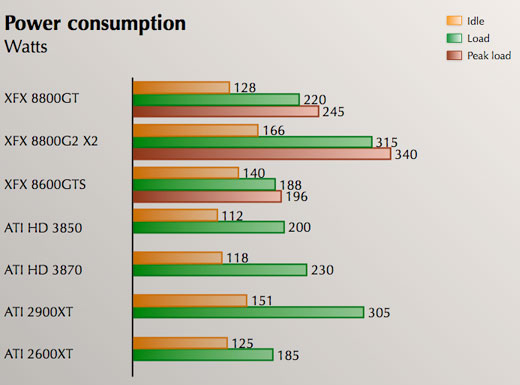Well it might not be a killer, we'll have to see what the street pricing and availability is like.
More reviews should come tomorrow.
The 8800GS 384mb is about 80% the performance of a 8800GT, and should be priced at around $165 USD.
The 768mb GS (also higher clock speed) will probably be closer to 85% of the GT and priced just over $200.
Prices don't seem THAT great when you compare it to boxing day 8800GT prices, but the 384mb GS in particular may find its niche.
More reviews should come tomorrow.
The 8800GS 384mb is about 80% the performance of a 8800GT, and should be priced at around $165 USD.
The 768mb GS (also higher clock speed) will probably be closer to 85% of the GT and priced just over $200.
Prices don't seem THAT great when you compare it to boxing day 8800GT prices, but the 384mb GS in particular may find its niche.



 Fractal Design Arc Mini R2, 3800X, Asus B450M-PRO mATX, 2x8GB B-die@3800C16, AMD Vega64, Seasonic 850W Gold, Black Ice Nemesis/Laing DDC/EKWB 240 Loop (VRM>CPU>GPU), Noctua Fans.
Fractal Design Arc Mini R2, 3800X, Asus B450M-PRO mATX, 2x8GB B-die@3800C16, AMD Vega64, Seasonic 850W Gold, Black Ice Nemesis/Laing DDC/EKWB 240 Loop (VRM>CPU>GPU), Noctua Fans.


Comment